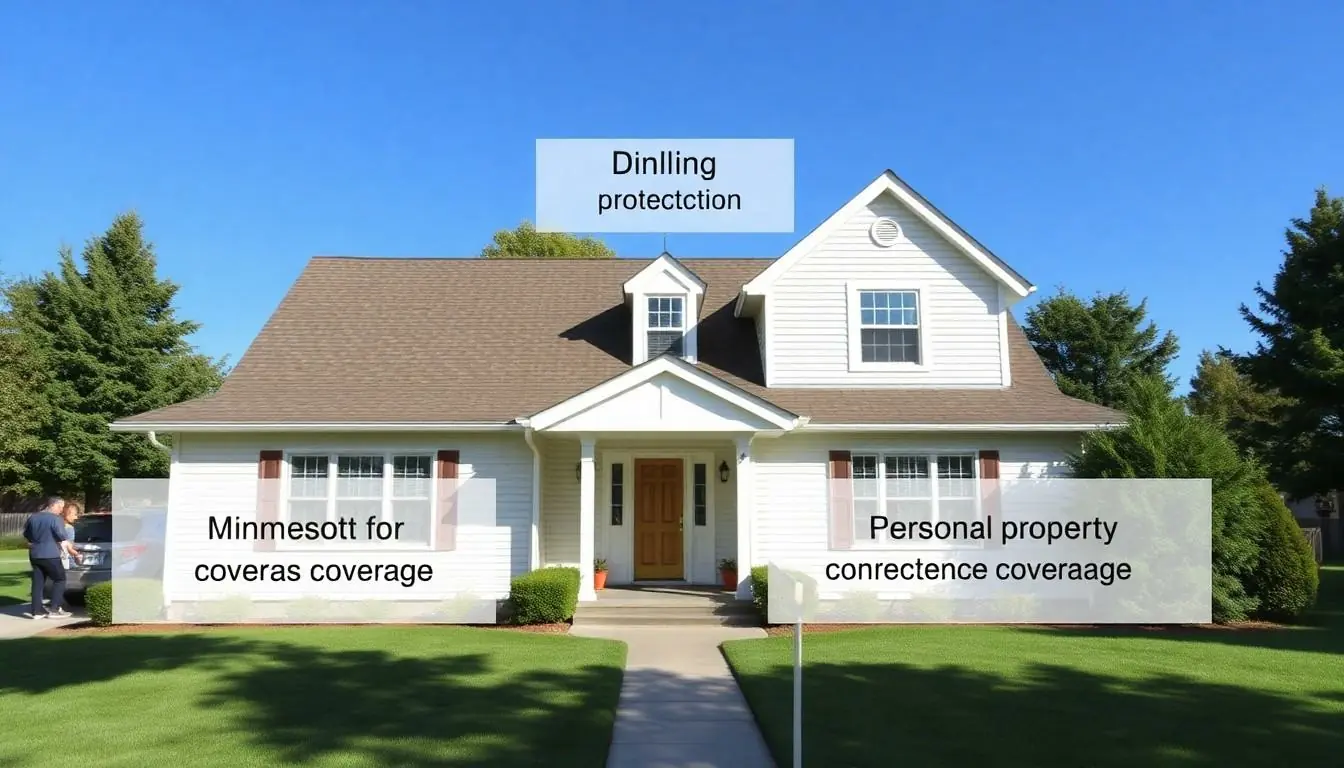In the land of 10,000 lakes, where ice fishing meets summer barbecues, Minnesota homeowners know one thing for sure: life can throw some wild curveballs. From snowstorms that could bury a car to the occasional bear sighting, it’s essential to protect that cozy abode. Enter Minnesota homeowners insurance—a safety net that’s as vital as a good pair of snow boots.
But let’s be real. Navigating the world of insurance can feel like ice skating on thin ice. With so many options and jargon that sounds like a foreign language, it’s easy to feel overwhelmed. Yet, finding the right coverage doesn’t have to be a daunting task. With a little guidance, homeowners can secure peace of mind while enjoying all the joys this beautiful state has to offer. After all, who wouldn’t want to protect their home sweet home from the unexpected?
Table of Contents
ToggleOverview of Minnesota Homeowners Insurance
Homeowners insurance in Minnesota plays a crucial role in safeguarding properties from various risks. Residents benefit from having comprehensive coverage tailored to local challenges such as severe weather and wildlife encounters.
Importance of Homeowners Insurance
Homeowners insurance protects against significant financial losses from damage or theft. It covers the structure, personal belongings, and liability for injuries occurring on the property. With Minnesota’s unique climate, homeowners face risks like severe storms, hail, and flooding. This coverage helps homeowners navigate these challenges, providing peace of mind. Insurance policies can also include additional features, such as coverage for temporary living expenses during home repairs. Securing proper insurance ensures protection from unexpected costs and contributes to a sense of stability.
State-Specific Requirements
Minnesota’s homeowners insurance requirements include specific regulations that vary by policy. Homeowners must have liability coverage, which protects against legal claims due to injuries or property damage. The state does not mandate a minimum level of property insurance, but many lenders require coverage when financing a home. Each policy may include provisions for repairing or rebuilding after a loss, essential in a state known for winter-related damages. Additional coverage options, such as endorsements for sewer backup or personal property, may suit homeowners’ individual needs. Understanding these requirements ensures homeowners make informed decisions about their insurance coverage.
Types of Coverage Available

Homeowners in Minnesota can choose from several types of coverage to protect their properties. Understanding these options ensures adequate protection against various risks.
Dwelling Protection
Dwelling protection covers the physical structure of the home. This insurance includes damages caused by fire, storms, or vandalism. It’s essential to consider replacement cost versus actual cash value; replacement cost ensures full coverage to rebuild the home. Policyholders should also assess any additional structures on the property, such as garages or fences, to include them in their coverage.
Personal Property Coverage
Personal property coverage safeguards belongings within the home. This coverage applies to furniture, electronics, clothing, and other personal items. Homeowners should take an inventory to determine the total value of their possessions, ensuring adequate limits on the policy. Specialized items, like jewelry or artwork, may require additional endorsements for full protection.
Liability Coverage
Liability coverage protects homeowners from legal claims due to injuries on their property. This might include medical expenses for guests injured during visits or damages resulting from accidental incidents. Settling claims can be costly, making liability limits critical. Purchasing higher limits provides further security against substantial legal fees or judgments.
Factors Affecting Premiums
Several factors influence homeowners insurance premiums in Minnesota, impacting costs for policyholders. Understanding these can help homeowners make informed coverage decisions.
Location and Geography
Location significantly influences insurance rates. Proximity to water bodies increases flood risk, while rural areas may face higher animal-related claims. Urban settings might experience higher rates due to theft or vandalism incidents. Weather patterns in Minnesota also play a role, as areas prone to severe storms or hail see elevated premiums. Insurers evaluate local crime rates, community safety, and disaster statistics to determine appropriate costs.
Home Characteristics
Home characteristics affect insurance premiums directly. Age of the home can increase rates, as older structures might lack modern safety features. A well-maintained roof boosts eligibility for discounts. Square footage, building materials, and overall condition also contribute to premium calculations. Additional safety features like security systems or smoke detectors often lower costs. Customizations such as swimming pools or extensive landscaping may raise premiums due to associated risks.
Claims History
Claims history serves as a critical factor in determining homeowners insurance premiums. A homeowner with multiple previous claims faces higher rates, reflecting the increased risk to insurers. Conversely, a clean claims record may lead to lower premiums, showcasing responsible homeownership. Frequency of claims affects overall costs, emphasizing the importance of risk management. Insurers assess claim types too; weather-related claims might not affect rates as dramatically as liability-related claims. Consistent policies and proactive measures can positively influence future premium assessments.
Top Insurance Providers in Minnesota
Minnesota offers various insurance providers, each delivering distinct coverage options tailored to homeowners’ needs. Understanding these options aids in making informed choices.
Comparison of Coverage Options
Coverage options differ among insurance providers, affecting premiums and protection levels. Some companies offer bundling discounts for auto and home insurance, which can be cost-effective. While basic policies generally include dwelling and personal property coverage, additional endorsements may cover specific risks like sewer backup or other water-related damages. Policies may also vary in liability limits; higher limits enhance financial protection against lawsuits. Therefore, reviewing multiple providers and their coverage details proves beneficial for homeowners aiming to find adequate protection.
Customer Satisfaction Ratings
Customer satisfaction ratings reflect the quality of service and claims handling among insurance providers. J.D. Power surveys reveal trends in consumer experiences, highlighting standout companies in Minnesota, particularly those known for exceptional claims processing and customer support. Ratings allow homeowners to gauge which insurers maintain good relationships with clients. Understanding these ratings can lead to informed decisions, ensuring satisfaction with service. Thus, homeowners should prioritize customer feedback alongside coverage options when selecting an insurance provider, ensuring their needs are well met.
Homeowners insurance in Minnesota is more than just a policy; it’s a crucial safeguard against the state’s unique challenges. With severe weather and potential wildlife encounters, having the right coverage can provide essential peace of mind. Homeowners must navigate their options carefully to find a policy that meets their specific needs while considering factors like premiums and coverage types.
By understanding state regulations and comparing different providers, homeowners can secure the best protection for their properties. Ultimately, investing time in selecting the right homeowners insurance allows residents to enjoy their beautiful Minnesota homes without unnecessary worry.



